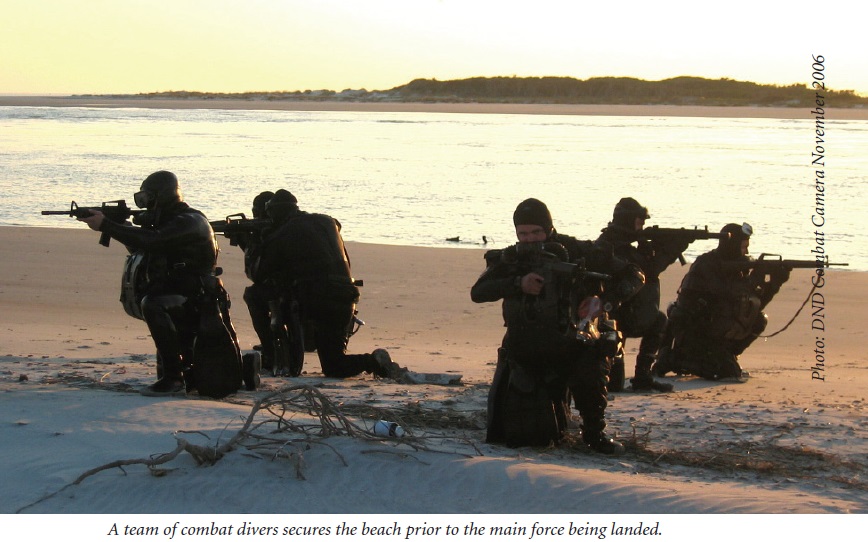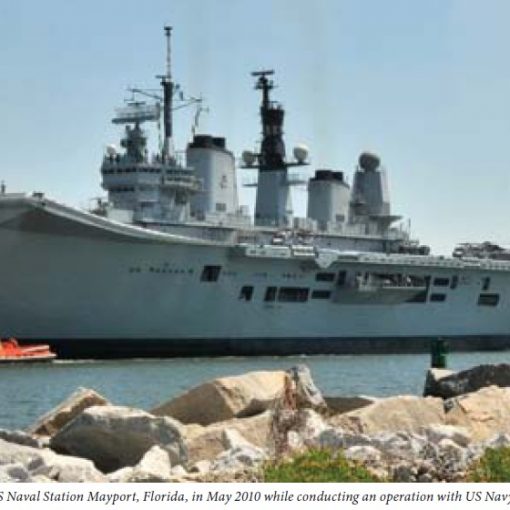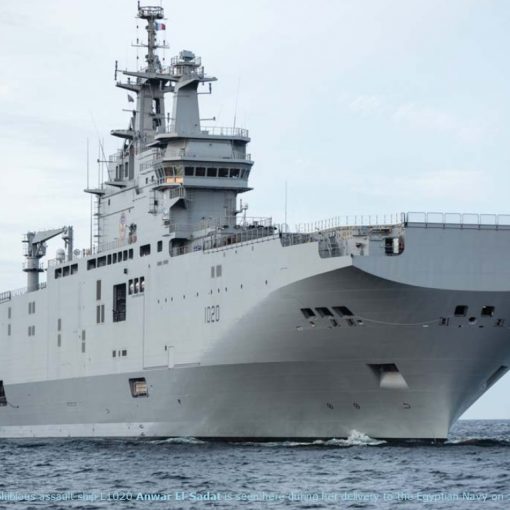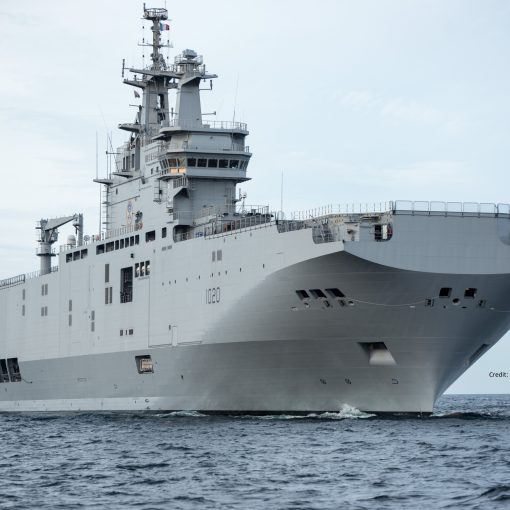Cdr. Ken Hansen has published a thoughtful analysis in Canadian Naval Review and followed it up with the most recent contribution to Broadsides. His analysis suggests that the 250 person Marine Commando Regiment is too small to field and sustain an infantry platoon size force of 32 people. I am not certain that his assertion is entirely correct. It would be instructive to conduct a comparative analysis of the structure and composition of both the JTF2 and the Canadian Special Operations Regiment (CSOR) to determine
their operational output. As both units are shrouded in secrecy, such an analysis will not be easily accomplished.
From the scarce information that is publicly available, it seems that the CSOR is intended to have an Operational Company consisting of more than one “Direct Action Platoon.” This platoon will probably be about 32 all ranks. The Operational Company would likely comprise a Headquarters and 2-3 platoons and thus be staffed by 100-135 personnel in all. This would be a Herculean task for a unit of 300 people to sustain. Therefore, one might find, upon analysis of the facts, that the Operational Company can currently only sustain one fully ready platoon with the second platoon being a training organisation and the third being in cadre status.
Like Cdr. Hansen, I also offer a word of caution about the use of the term “regiment.” A regiment means different things in different organisations. In Canada we use the term to describe a single battalion size unit in some situations and in other cases we use the same term to describe a collection of several battalion size units. For example, the Royal Canadian Dragoons is a single battalion size armoured regiment whereas the Royal Canadian Regiment consists of three regular infantry battalions, a regimental training organisation and Militia battalions. The West Nova Scotia Regiment is a single reserve infantry battalion that would usually consist of 150-175 personnel. In the context of the United States Marine Corps the usual marine infantry regiment is comprised of three battalions and more than 3,000 people.
The bottom line is that Cdr. Hansen is probably correct in his assertion that the Marine Commando Regiment can only deploy a single platoon sized unit and this is a very small force. It could be augmented by EOD, diving, engineers and other specialist personnel for specific missions. Methods for deployment would include fixed wing aircraft, helicopters, submarines, surface ships and small boats. The Canadian Forces does not have many of these assets; however, there are sufficient transportation assets to support a priority commitment. Unfortunately, there is no guarantee as to where the commitment might arise and therefore the response may not be either rapid or timely. The creation of an East Coast based platoon, drawn from the Marine Commando Regiment, would ease the domestic response burden but not necessarily the ability to respond to an international problem, such as we experienced in Lebanon or may experience in Sri Lanka or elsewhere.
To my mind, Canada missed a significant opportunity to enhance its sea response by the sinking of HMCS Huron. This ship, like the equally elderly Argentine Type 42 guided missile destroyer ARA Hercules, could have been converted into a fast transport and support ship for the commando force. Hercules carries two Sea King helicopters and rigid inflatable boats. The anti-aircraft missile system is thought to have been removed. It probably supports a platoon size organisation. There is still an opportunity to use one of the remaining Tribal-Class destroyers in the role or task a Halifax-Class frigate, as suggested by Cdr. Hansen. However, the use of one of these ships does not guarantee that she will be in the right place to deal with the crisis that demands Canadian intervention. There is a need, therefore, to consider the procurement of transportation and supporting military resources from trusted allies in situations where our navy cannot arrive on station in a timely fashion to support the deployed commando force.
In conclusion, the creation of the Marine Commando Regiment may have been an act to provide some West Coast capability to support the security of Winter Olympics in 2010. Whether it continues to develop after that date remains to be seen. There are many tasks that it could perform so there is a hope and expectation that it will be allowed to enhance its capabilities and reach full maturity at some point well into the future.





